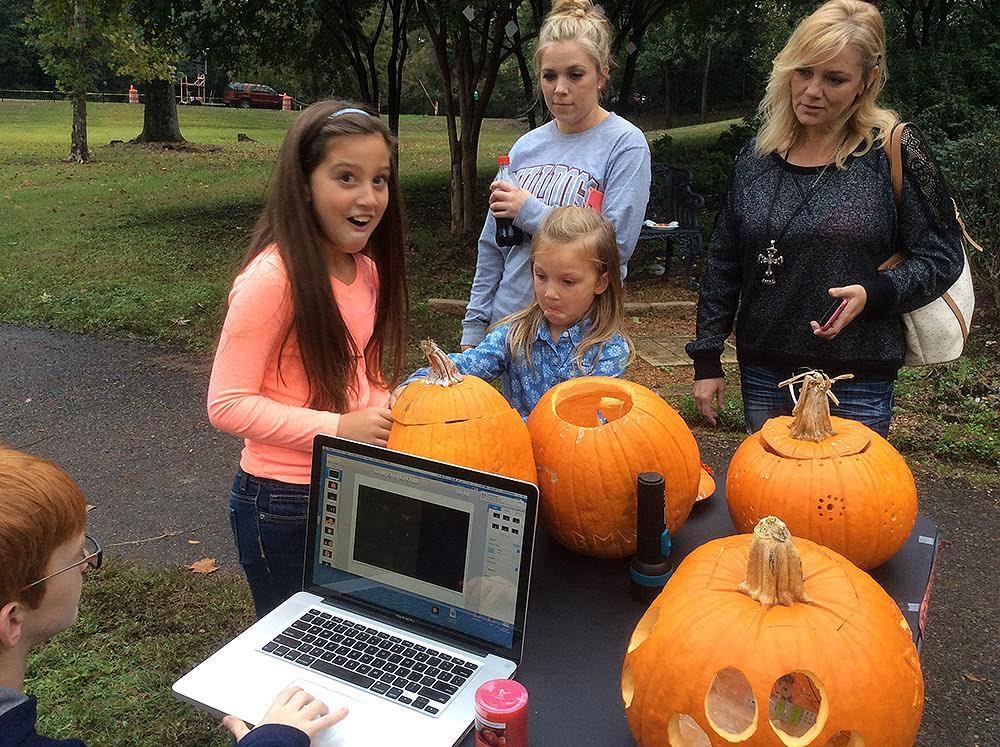This post was written by Katie Chirhart, an elementary teacher in Caddo Schools Parish in Louisiana and an active TCEA member.
A great makerspace is more than just materials, technology, and people. It requires opportunities for students to create for authentic purposes. This has been my biggest challenge. I started a makerspace this fall with a group of third graders. Their first task was to use littleBits to build something that fulfilled a need.
littleBits are electrical building blocks. Sets include a battery and a variety of small pieces, or modules, that connect easily with magnets. Each color-coded module completes an action. For example, pink modules affect all the modules after them, while green modules do stuff. Examples of pink modules are dimmer switches, pressure sensors, sound sensors, and buttons, while green pieces light up, shake, twist, and turn. Modules can be combined into an almost limitless number of ways.
Once the assignment was given, students put together some great creations, but unfortunately, no one was there to share in their successes. Producing results is great, but sharing them is even better. Then, the idea hit! Our school is located in Shreveport, LA. Shreveport has an annual tradition called Pumpkin Shine. During this event, individuals in the community place hundreds of decorated pumpkins along a running path in a local park. As the sun sets, people from all over the city and neighboring towns come to view the pumpkins with more than 1,000 people attending the event each year.
This was the opportunity I had been looking for—the kids could combine the littleBits and pumpkins to create an interactive pumpkin display! I presented the idea to my students and they were thrilled! Due to a lack of littleBit pieces, we could only make five pumpkins. A competition was born. The top five designs would be in Pumpkin Shine.
First, I required students to make a plan. Each student had to sketch how the littleBits would look from the outside of a carved pumpkin while sketch number two showed how the littleBits were put together inside the pumpkin. Twenty students entered the contest. Once the top five pumpkins were chosen, the contest winners made a sound-activated pumpkin, a light-activated pumpkin, two pumpkins that included pressure sensors, and one that used a dimmer switch connected to a buzzer. As students worked, they quickly realized they needed a way to let people know HOW to interact with their pumpkins, so they created signs to display next to each pumpkin. For example, the sound-activated pumpkin’s sign said, “Say Boo If You Dare.”
Finally, it was time! We took the pumpkins to Pumpkin Shine and I was not disappointed. My students had a blast sharing their creations with guests. They were so busy interacting with guests that they did not sit down the entire three hours! Students invited every person walking by to “play” with the pumpkins. They explained how their creations worked to complete strangers with poise and confidence. They were empowered. Perhaps, most surprising, were the looks that came from the guests. They were amazed at the kids’ creations. Visitors, both children and adults, giggled, smiled, and asked questions while I stood back and watched. They certainly didn’t need any help from me.
The popularity of makerspaces has given students unique opportunities to demonstrate their ingenuity in innumerable ways. My job, as a makerspace facilitator, is to provide students with the materials and a purpose. It is their job to shine!
You can follow Katie on Twitter and see other ways she is effectively integrating technology into her elementary classroom. She also has several other blog posts available here.

